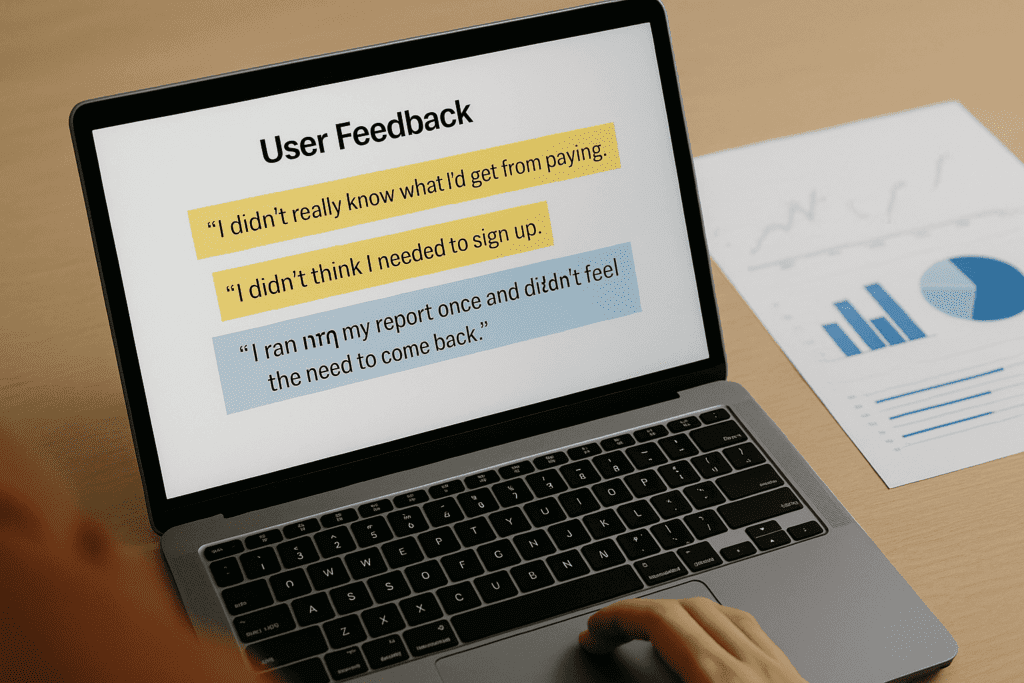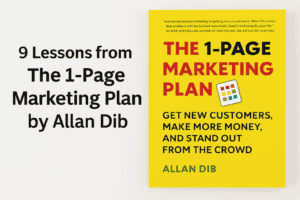I built something people actually liked—a simple website checker for founders. It got traffic. It got signups. But hardly anyone paid.
That’s when it felt like I hit a wall.
I had 2,000 visits and only 5 paying users. It felt like running a small business where everyone walks in, looks around, then quietly leaves.
I started tweaking everything—my pricing, messaging, even how I followed up with users.
Bit by bit, things started working.
This post is a breakdown of what I changed—what actually moved the needle and what didn’t.
If you’ve ever built something useful but struggle to make it profitable, you’re in the right place.
Let’s dive into the 9 small tweaks that made a big difference.
Table of Contents
9 Simple Tips to Improve Small Business Conversion Rate Fast
It doesn’t end at building something people love, you need paying customers for it to be a real business. Here, I am sharing 9 changes that helped my small business go from free users to real revenue.
1. I Stopped Guessing and Started Asking
At first, I thought I knew what my users needed.
Turns out—I didn’t.
I had 2,000 visitors, over 100 signups, and just 5 paying users. That disconnect told me one thing: something wasn’t clicking.
So I emailed a few users and just… asked.
- What brought you here?
- What did you expect to get?
- Why didn’t you upgrade?
The answers were gold. One said, “I didn’t really know what I’d get from paying.” Another said, “I didn’t think I needed to sign up.”
That’s when I realized: if they didn’t know the value, that’s on me.
2. I Rewrote My Landing Page (Again)

The first version of my landing page talked about “features.”
The new version talked about outcomes.
Instead of saying, “Check your Open Graph settings,” I said, “Make sure your site looks great when shared on social media.”
That simple shift—explaining the why behind the tool—helped users connect the dots.
I also:
- Moved all key info above the fold
- Made the CTA button bigger and clearer
- Added testimonials from real users
More people clicked. More people signed up.
3. I Showed the Value Before Asking for Money
Originally, the tool asked for payment before showing results. Rookie mistake.
So I flipped it.
Now users get a free, partial report instantly. They only need to upgrade to unlock the full details and premium features.
You can find other great freebie ideas here. You can choose from any depending on your business and its objectives.
That change alone doubled my conversion rate.
Here’s the logic:
- People don’t pay for mystery.
- But they will pay to go deeper once they see value.
4. I Removed “Lifetime Access” (It Was Confusing)
I used to offer “lifetime access” as my main selling point.
But users didn’t get it.
What does “lifetime” even mean for a website audit tool?
One user told me:
“I ran my report once and didn’t feel the need to come back.”
Fair.
So I switched to a more natural model:
- One-time payment for a full report
- Optional monthly checks for those who want ongoing updates
Way clearer. And more aligned with how people actually use the product.
5. I Focused on Non-Technical Users

Techies weren’t my ideal audience—they already had their own tools.
But small business owners? Side hustlers? Solopreneurs?
They loved it.
I adjusted the language on the site to match how they speak. Instead of “favicon missing,” I now say “your site icon might not show up in browser tabs.”
Same thing. But easier to understand.
I also added:
- Step-by-step guides for fixing issues
- Clear explanations of why each error matters
- A calmer design with less jargon
Result: fewer confused emails. More conversions.
6. I Added Urgency Without Being Pushy
You won’t find fake countdown timers on my site.
But I did add subtle nudges to encourage action:
- “Get a full report now” instead of “Learn more”
- Show how many checks were run today (“2,000+ websites checked this month”)
- Mentioned that the premium plan includes priority support for a limited number of users
These nudges aren’t aggressive. But they make people feel like they’re joining something active and useful—not just poking around an abandoned tool.
7. I Stopped Offering Too Much for Free
My tool was too generous at first.
Users could run a full site check, get the top issues, and leave—without ever paying or signing up.
I thought I was being helpful. I was actually killing my own business.
So I trimmed it back:
- The free tool now gives a preview
- Full results require a signup
- Deep insights are reserved for paid users
Guess what? People still use it. But now some actually pay.
You don’t need to lock everything. But don’t give away the whole house, either.
8. I Built in Natural Follow-Ups
Most people don’t buy on day one.
But if you disappear after they visit? You’ve lost them.
I started collecting emails from free users—just a name and email in exchange for their partial report.
Then I followed up with a simple, helpful email:
- A recap of their results
- One tip they could implement right away
- A soft nudge to upgrade if they wanted more
That one email brought back more users than I expected. People just needed a gentle reminder.
9. I Accepted That It’s a Work-in-Progress
Here’s the honest truth: I’m still figuring it out.
Not every fix worked. Some ideas flopped. Some pricing experiments totally failed.
But every small test gave me something to build on.
What changed was my mindset. I stopped waiting for the “perfect” offer. I stopped overthinking. I started testing faster.
That’s how my small business slowly went from “just another tool” to something that actually makes money.
And I’m still learning.
Final Thoughts
If you’re building something useful but struggling to monetize it—you’re not alone.
I was stuck in that weird in-between too. Plenty of traffic, great feedback… but no revenue.
The good news?
You don’t need to scrap everything and start over. Sometimes, a few simple tweaks can make all the difference.
Start by:
- Talking to your users
- Clarifying your value
- Asking for the upgrade after showing what’s possible
And don’t be afraid to experiment. Your small business doesn’t need to be perfect. It just needs to keep moving forward. My article on marketing challenges also adds a great perspective to this.
Got stuck like I did? Drop a comment—I’d love to hear what fix finally worked for you.




Pingback: 5 Must-Have Systems for Small Business Administration (Plus Tools)